- Author: Denise Godbout-Avant
How Did the Western Monarchs Do This Winter in California?
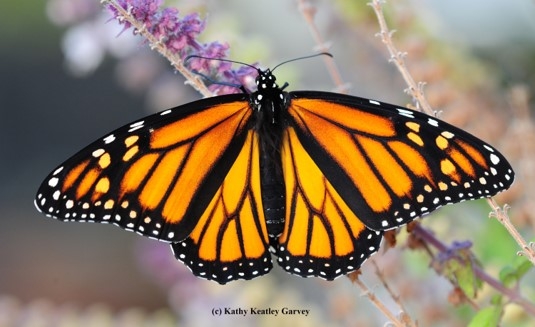
Monarchs in Trouble
The colorful orange-and-black, magnificent monarch butterflies (Danaus plexippus) are the world's most recognized and beloved butterflies. Yet, they are increasingly in danger of becoming extinct. An announcement last summer from International Union for Conservation of Nature (IUCN) announced the monarch butterfly had been put on its "Red List of Threatened Species as Endangered” due to habitat destruction, climate change, and pesticides, with the primary reason being reduction in milkweed plants that are so vital to their survival.
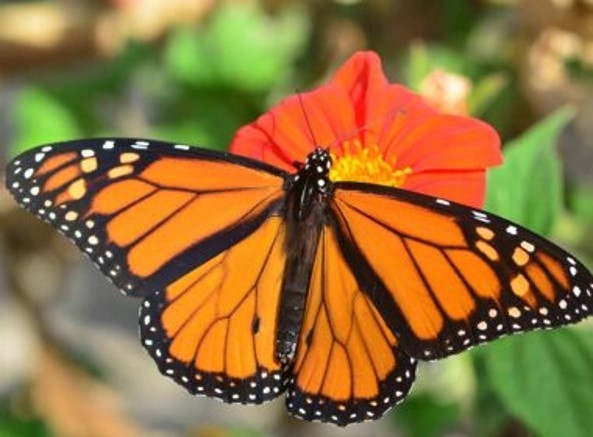
This Year's Status
According to a recent article by Tara Duggan (https://www.pressreader.com/usa/san-francisco-chronicle-late-edition/20230201/281595244675872) the 2022 annual Thanksgiving count organized by Xerces Society showed relatively high numbers of western monarchs this year with over 330,000 found in overwintering sites throughout California's central coast. This is a significant increase from the winter of 2020-21 when fewer than 2,000 were counted and they were thought to be on the threshold of extinction. The 2021-2022 count the following year was much better, at 250,000.
At the Pismo Beach monarch sanctuary, a board showed some of the tallies made over the years: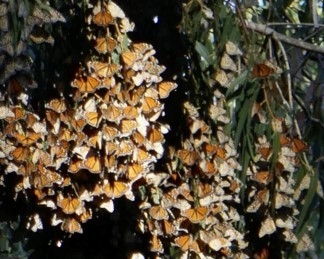
1990 – 230,000
1995 – 150,000
2000 – 40,000
2005 – 32,000
2010 – 24,000
2015 – 28,000
2017 – 12,300
2019 – 6,000
2020 – 188
2021 – 22,700
2022 – 24,128
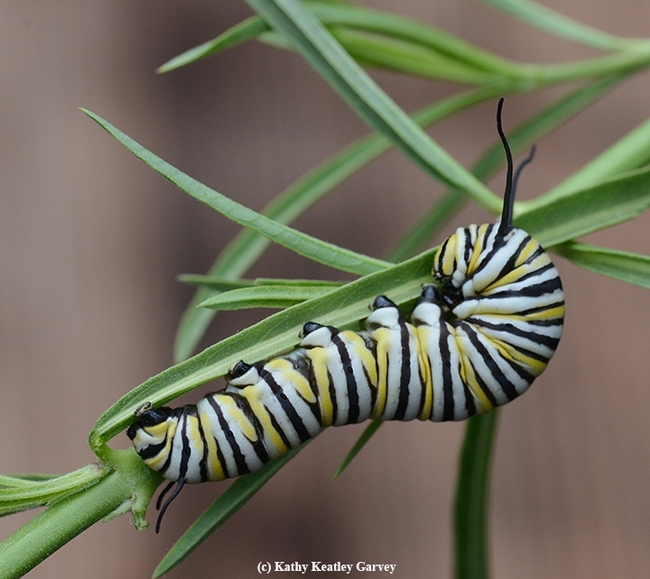
11/15/22 – 24,100
11/30/22 – 19,177
12/13/22 – 15,707
1/17/23 – 15,817
2/7/23 – 15,015
2/21/23 – 4,628
How You Can Help
- Plant nectar plants for the adults! While caterpillars feed only on milkweed, the adult monarch feeds on nectar from flowers while migrating. Native plants with tubular or funnel shapes are particularly attractive and nutritious for all butterflies.
- Plant milkweed! This plant is crucial to monarchs' survival since it is the only plant females lay their eggs on and the only source of food for the emerging larvae. When possible, plant from seed. If you purchase plants ask the nursery or garden center if the grower treated the plants with pesticides. The best time to plant is in the fall months when it's cooler, at the start of the rainy season. Local native milkweed varieties include:
o Asclepias fascicularis (Narrowleaf milkweed)
o Asclepias speciosa (Showy milkweed)
o Asclepias syriaca (Common milkweed)
o Asclepias cordifolia (Heartleaf milkweed)
- Use UC Integrated Pest Management as a resource: (https://ipm.ucanr.edu/PMG/menu.homegarden.html). If you use a pesticide, avoid broad spectrum pesticides, selecting a pesticide for the specific pest/disease, or choose one that is less toxic such as horticultural oils and insecticidal soaps. Be sure to follow instructions and apply in early morning or late evening when pollinators are unlikely to be present.
- Get involved in the annual western monarch Thanksgiving and New Year counts (https://www.westernmonarchcount.org/) and/or tagging monarchs to monitor their migration patterns (https://www.monarchwatch.org/tagging/)
What Will the Future Bring for the Western Monarch?
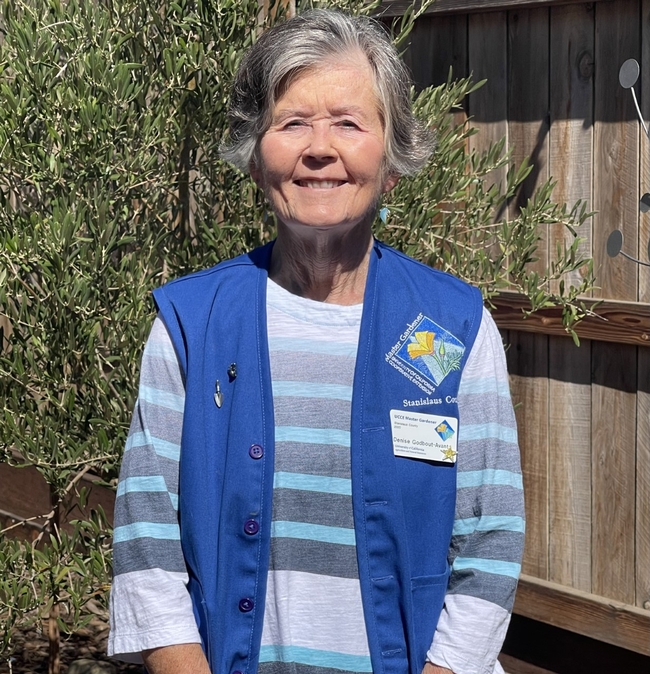
Only time will tell if their numbers will increase, but scientists say these efforts could help the western monarch population recover. By planting milkweed and native flowering plants in our gardens, we can be a part of this ongoing endeavor and hopefully be able to see more of these magnificent butterflies floating about in our gardens in the future.
To learn more about the life cycle and migration of the western monarch, read my article “Marvelous Monarchs” at https://ucanr.edu/blogs/blogcore/postdetail.cfm?postnum=55249
Denise Godbout-Avant has been a UCCE Master Gardener with Stanislaus County since 2020
- Author: Anne Schellman
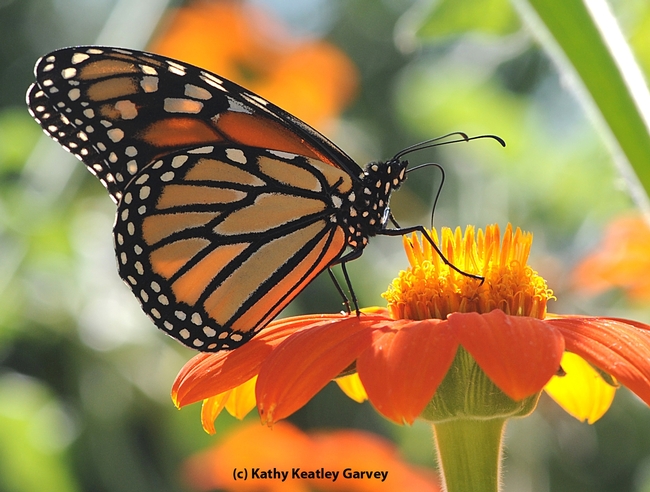
Date: Tuesday, December 20, 2022
Time: 9:00 am – 10:30 am.
Where: Online
Register: https://ucanr.edu/monarchs/2022/online
Link: you'll be sent a link to log in with before the class.
Registration will close Tuesday, Dec 20 at 8:00 a.m.
Can't tune in live? Watch the recording the following week on our YouTube Channel.
- Author: Denise Godbout-Avant
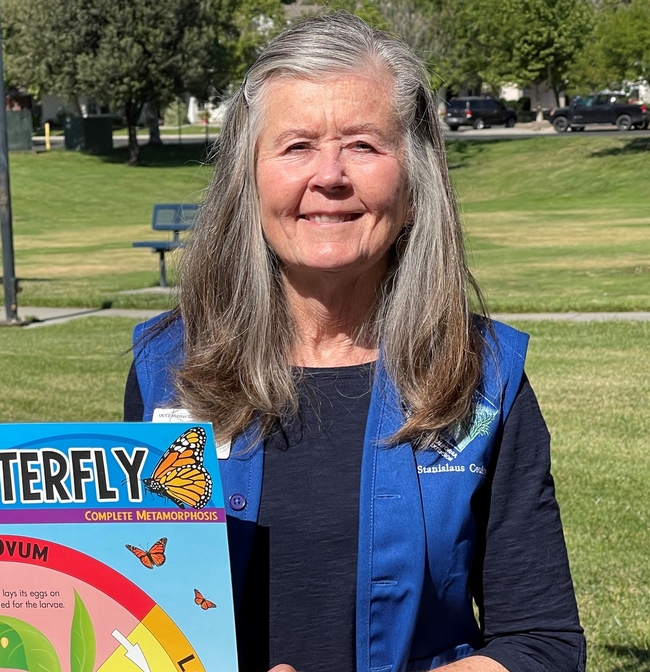
Life Cycle
Like all butterflies, Monarch butterflies have four life stages: 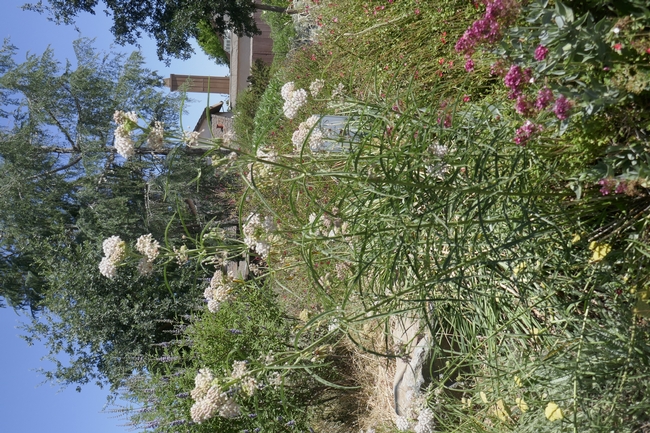
- Egg: The female Monarch lays her eggs on their sole host plant, the milkweed (Asclepias). She generally lays one egg per plant. Each egg is about the size of a grain of salt.
- Larva (Caterpillar): After 3 – 5 days, the Monarch egg hatches to a larva, also called a caterpillar, eating only milkweed leaves. They go through five instar stages over a period of 10 – 14 days as they grow from 1/16th of an inch to about two inches, molting their exoskeleton at each stage.
- Pupa: The caterpillar finds a protected place to develop its chrysalis for the pupal stage. During the next 11-15 days the pupa will change to an adult by liquifying its body while inside the chrysalis, ultimately emerging to the adult butterfly.
- Adult: In the final hours before emergence, the chrysalis becomes translucent, a crack will appear, with the Monarch butterfly freeing itself from the case. Hanging from the now-empty chrysalis case, it will spend the next few hours pumping fluid into its wings until they are firm enough to fly. Eventually it will take flight and start seeking out nectar for its 1st meal. Adult Monarch butterflies feed on flowers, which makes them pollinators. The nectar provides energy for flight, mating, and migration.
Milkweed
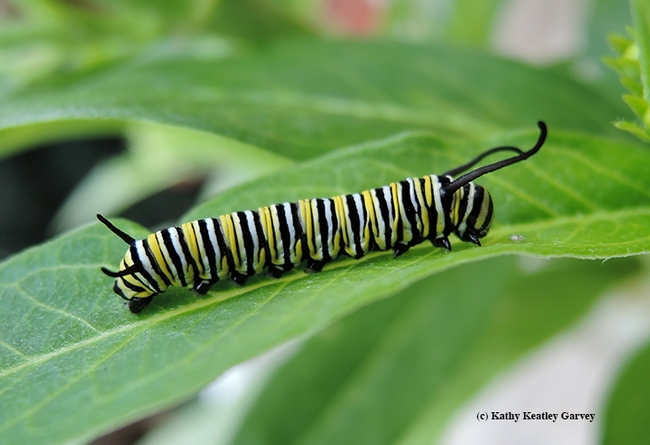
Migration
The Monarch migration is extraordinary with none quite like it in the butterfly world. A Monarch butterfly begins an epic one-way journey south up to 2,800 miles to a specific place where they have never been to before, where their great-grandparent spent the previous winter. It remains largely a mystery how successive generations know the route and where to spend the winter months.
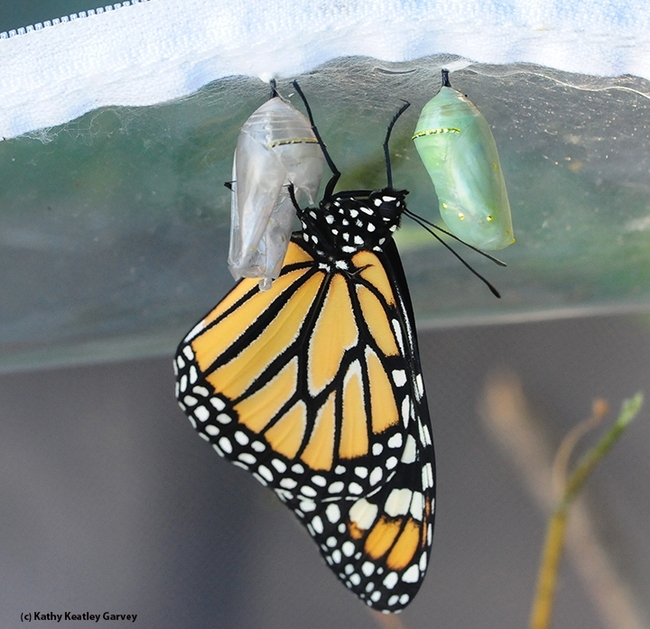
Late in summer or early fall, a final generation emerges. Triggered by changes in temperature and sunlight, this generation will migrate south. Known as the “Methuselah” generation (after the biblical patriarch said to have lived 969 years), they can live up to 6 – 8 months. They do not emerge as sexually mature butterflies, being in a “sexual diapause,” so their energies can be focused on developing flight muscles and storing lipids for their long journey south and surviving the winter months.
Come spring, with warming temperatures and longer days, these butterflies will become sexually mature, feed on nectar, mate, and start moving northward, laying eggs, which will hatch to continue the annual migration cycle.
You may see migrating Monarchs this fall in your garden feeding on nectar flowers, resting on flat flowers or rocks, or drinking from water sources. Admire them, but leave them be, since they still have some distance to go to reach their wintering grounds. In California, their wintering spots are along coastal areas from Monterey area (Pacific Grove) to San Diego.
Monarchs in Trouble
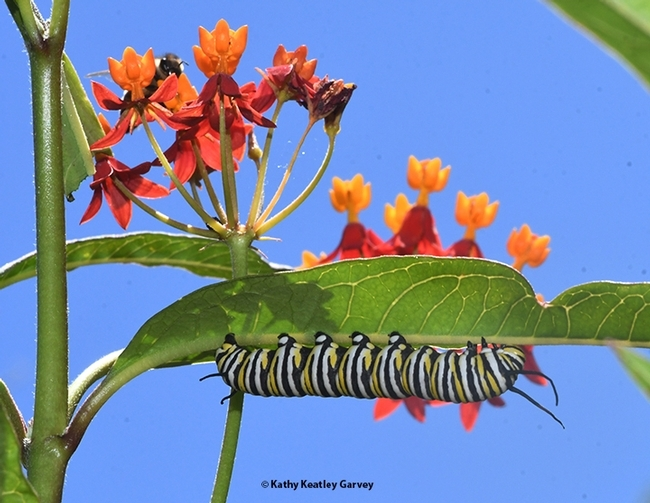
In temperate areas like the Central Valley, the tropical milkweed plant (Asclepias currasavica) does not go dormant. A parasite that lives on the plant is ingested by developing caterpillars and is linked lower migration success and reductions in lifespan. Choose milkweed species that goes through winter dormancy such as narrowleaf milkweed and showy milkweed (A. fasicularis and speciosa.)
The IUCN announcement states: "The western population is at greatest risk of extinction, having declined by an estimated 99.9%, from as many as 10 million to 1,914 butterflies between the 1980s and 2021.” In addition, "The larger eastern population also shrunk by 84% from 1996 to 2014. Concern remains as to whether enough butterflies survive to maintain the populations and prevent extinction."
Sign up for our Free Class!
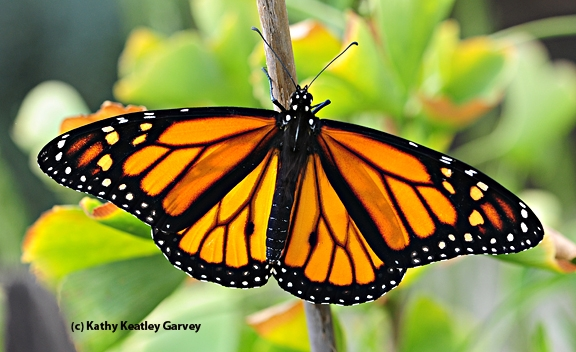
Date: Saturday, October 15, 2022
Time: 9:00 am – 10:30 am
Where: Stanislaus Agricultural Center, 1800 Cornucopia Way, Harvest Hall
Register: http://ucanr.edu/monarchs/2022
---------------------------------------------------
Resources:
- Art Shapiro's Butterfly Site https://butterfly.ucdavis.edu/butterflies
- Butterflies in Your Garden https://ucanr.edu/sites/CEStanislausCo/files/345791.pdf
- Xerces Society - Pollinator Plants: California https://xerces.org/publications/plant-lists/pollinator-plants-California
- UC Davis Arboretum – Larval Hosts for Butterflies https://arboretum.ucdavis.edu/blog/larval-host-plants-butterflies
- California Native Plant Society – Native Planting Guides https://www.cnps.org/gardening/choosing-your-plants/native-planting-guides
- Tropical Milkweed - a no grow https://xerces.org/blog/tropical-milkweed-a-no-grow
- Calscape CA native plants https://www.calscape.org/
- UC ANR Bug Squad Blog https://ucanr.edu/blogs/bugsquad/
- International Union for Conservation of Nature (IUCN) https://www.iucn.org/
- The Monarch: Saving Our Most Beloved Butterfly, by Kylee Baumle, St. Lynn's PressMilkweed Poisoning: https://www.poison.org/articles/milkweed-can-cause-serious-poisoning-204
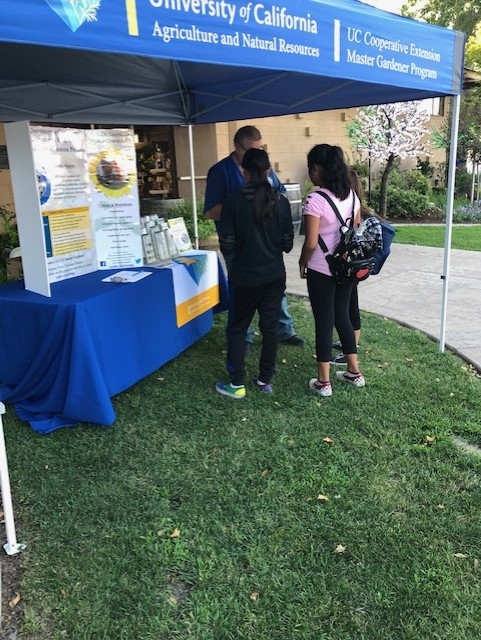
Help the Monarch Butterfly
Thanks to the Great Valley Seed Company, we are giving away free seed packets of narrowleaf milkweed (Asclepias fasciculata) while supplies last. Plant the seeds in full sun this fall to create a milkweed patch. The monarch butterfly population has declined by 90% since the 1980's. Their caterpillars only eat milkweed, so the more patches we can establish in Stanislaus County, the better! An item of note is we are asking people not to plant tropical milkweed (Asclepias curassivica), which harbors a disease that is killing the butterfly.
Water Wise Plants
Our table will showcase a colorful poster about water wise plants, along with a helpful handout listing attractive plant choices. Be sure not to miss one of our Water Wise Landscaping classes at a local library by reading this post. At the booth, pick up a copy of our upcoming classes so you never miss an event!
Have a Pest Problem?
Stop by our table and pick up our Quick Tips cards in English or Spanish on topics like ants, powdery mildew, gophers, cockroaches, and more! Ask a Master Gardener a question about your vegetable garden or pest problem.
For more information about the fair, visit the Stanislaus County Fair Website. https://stancofair.com/

